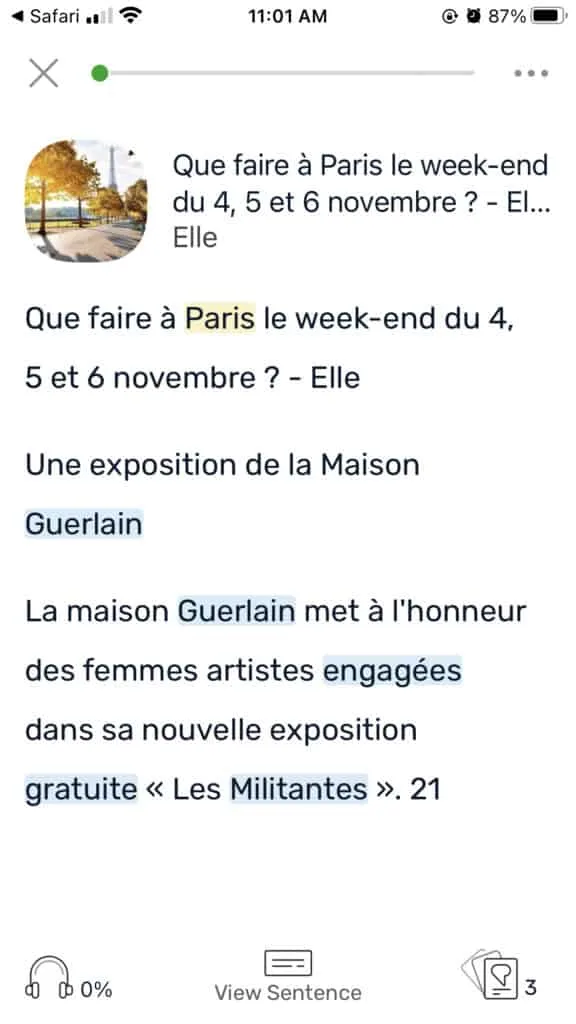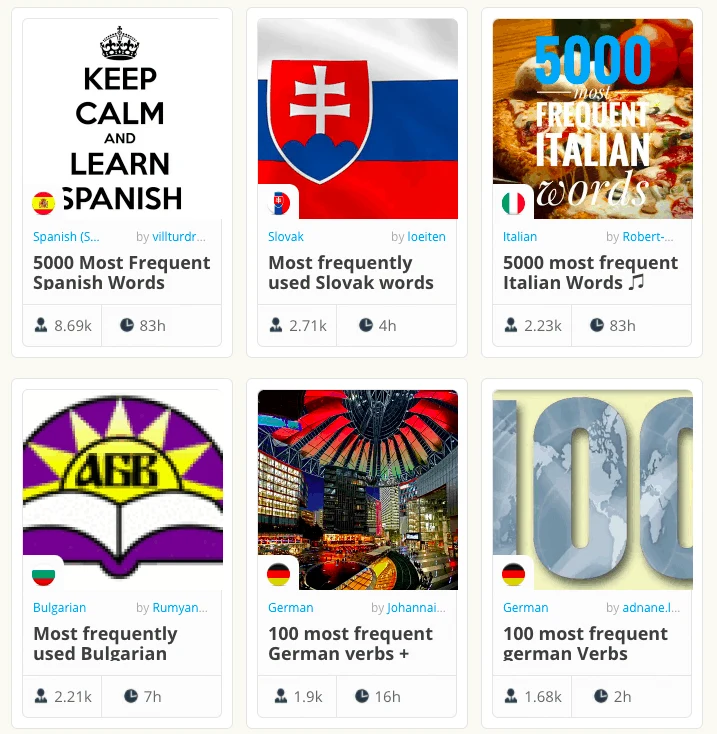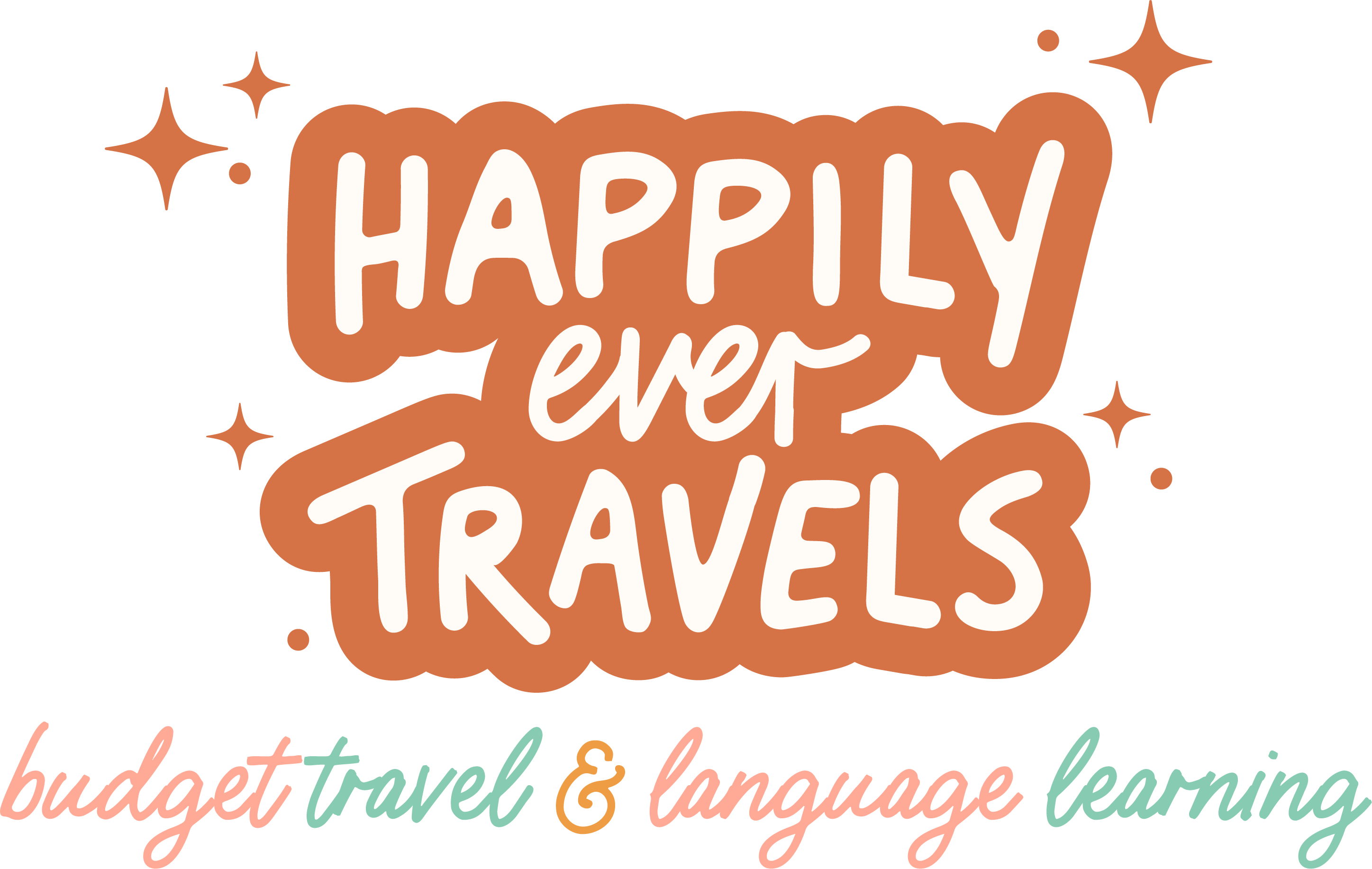Although I’ve always loved Duolingo, I’ve always thought that you need to pair it with another app or resource in order to become fluent. Now with the Duolingo Path update, I think many of us are looking for Duolingo alternatives that can fill the void of our beloved Duolingo tree.
Here are the best Duolingo alternatives that can get you fluent faster than Duolingo:
1. iTalki
In short, if you aren’t already taking classes on iTalki, you need to start right away. Nothing will improve your language skills faster and get you to fluency than actually being forced to speak to a native speaker for 30 minutes to an hour.
Not to mention that these classes are incredibly affordable, usually running from $5 to $10, depending on the language you’re learning.
I’ve been taking iTalki classes for as long as I’ve been on Duolingo, and I can tell you confidently that if I had only been using Duolingo, I might have never actually been able to speak Italian or French.
I’ve met so many amazing language tutors and have been able to have actual conversations with native speakers which would be very difficult to do as a beginner in the real world.
You get immediate feedback and after a few weeks or months of taking classes, iTalki will absolutely take you to the next level of language learning.
Basically, I’m obsessed and you will be too, try out a class and thank me later! Not a penny you spend on iTalki is wasted, in my opinion.
2. Babbel
Although Babbel doesn’t have the gamified structure of Duolingo, I think that if you are looking for official lessons that are an upgrade from what Duolingo can offer, Babbel is your best bet.
It actually teaches you grammar in a way that Duolingo can’t since Duolingo focuses mostly on translation, the only downside is you have to pay per language.
If the little grammar tips that Duolingo provided never seemed like enough for you, then Babbel can fill that space with an actual language course that covers everything.
Babbel costs from $7.50 per month to $15 per month depending on how long you subscribe, and this does not include all languages. Although I think the subscription is worth it to replace Duolingo with a better app that really teaches you the language, I think it needs to include all languages in the subscription price.
3. LingQ
LinQ is my Duolingo alternative of choice. I use this app every single day and I see myself using it forever. Why? Because it’s not actually the app that is teaching me the language, it’s native materials like YouTube channels, Netflix, and Cosmopolitan Magazine.
If you are someone who wants to immerse themselves in native materials instead of resources made for learners, LingQ is hard to beat.
It basically makes it so you can measure the words you are exposed to while reading or watching things in your target language. You can import anything from across the internet and it keeps track of words you’ve seen before, words you have learned, and words you have struggled to remember.
For example, here’s an article from Elle that I uploaded to LingQ. All the words in yellow are words that I’ve seen before but didn’t know, so I highlighted them. The white words are words I’ve read and knew, and the blue words are ones I’ve never seen before. Paris is highlighted here because, in some contexts, it means bet or wager and not the city in France.

When you see a word you don’t know, you can highlight it, then every time you see that word in other articles or video, if you recognize the word, you can click on it and change the level so you can keep track of new vocabulary that you are learning in context.

The app keeps track of every word you learn and you can review them in the flashcard section of the app. But for me, this is a great way to gamify reading and watching TV in my target language. I love getting notifications that I’ve reached another 1,000 words.
I can also say that as someone who absolutely detests flashcards and memorizing words, this method actually works.

By encouraging myself to read and consume as much content in my target language as possible, I am actually remembering and learning words quickly and being able to recall them in my iTalki classes.
The main criticism of LingQ is that the user interface is not the best and it doesn’t look very modernized. However, once you get past this, you can use this app to start to reach more advanced levels of your language by learning a ton of vocabulary.
You can use the app for free but a lot of the features are limited. I think that if you were ever going to pay for a language-learning app, let it be this one!
The price varies depending on how long you subscribe, but it includes all languages on the app. The price is between $7-$13 per month.
In my opinion, LingQ is the best alternative for Duolingo on this list if you are not a beginner.
4. Kwiziq
Unfortunately, this website is only available if you are learning French or Spanish, but if you are learning either of those, you are in luck.
Kwiziq is the best way to learn grammar that I have found on the internet. I’ve tried to force myself to go through grammar books only to buy another one a few months later and then drop that one too.
If you are someone who loves organization, Kwiziq is perfect. Basically, they follow the CEFR scale from A1 to C2. A1 is a super beginner and C2 is an educated native speaker level. They divide grammar subjects into these sections and have a visual representation of what you’ve covered.

The way they teach you these grammar topics is through short quizzes that they put together based on what you’ve answered correctly or incorrectly. It’s a smart system that will continue to show you the topics that are difficult for you until you get them right every time. So it basically tricks you into learning them!
If you keep getting something wrong, you can click on a short lesson that explains the concept. You can keep track of difficult concepts by adding them to a “notebook” where you can go back and study as much as you want.
You get 10 free quizzes per month, but if you complete those they’ll usually give you a free trial week to try out more quizzes. Although it’s not the cheapest platform at around $10-12 per month per language, I honestly think this one is worth the money, and I’m someone who barely pays for anything.
If you’re serious about really learning Spanish and French grammar properly, try Kwiziq for a few months and you’ll see what I mean. The concepts will actually start to stick with you.
They also have both Latin American Spanish and Spain Spanish if you have a preference. The longer your subscription, the cheaper it will be as well. And there is a discount if you decide to do both languages!
5. Memrise
Now, if you’ve been in the language-learning game for a while, you have heard of Memrise. It’s predominantly run by contributors from all over the world so you’ll be able to find games, pre-made flashcards, and quizzes on all kinds of topics, including a ton of languages.
If you’re struggling to find more words to learn or if you don’t want to make your own flashcards, Memrise is the best place to be!
You can go through their pre-made courses for each language if you are a beginner, but there are tons of flashcard decks to choose from.
My favorite way to use Memrise is to search for frequency vocabulary lists. Basically, these are lists of the most common 2,000, 5,000, or 10,000 words in each language.
So instead of learning random words, you learn the ones that are most frequently used first.

The best way to find these decks on Memrise is to search “frequent” and your language.
Although Memrise has an app, I don’t recommend using it. I don’t consider it very user-friendly, so definitely stick to the desktop version.
6. Drops
Want to build up your vocabulary skills? Drops is an aesthetically pleasing and user-friendly way to learn new words if you are looking for language-learning apps instead of websites to replace Duolingo.
The app has over 2000 words and phrases for most languages and uses cool graphics as hints if you get stuck. It brings the traditional flashcard method of language learning to life and is accessible wherever you go!
Drops cost $7.99 per month or you could buy a Lifetime membership for $94.99. I would definitely try out the one-week free trial first and see if Drops can replace Duolingo for you. For me, I thought Drops was super fun and one of the better-gamified apps to get you motivated to learn.
7. Mondly
Are you really into Duolingo’s leaderboard feature? Lucky for you, Mondly has a similar setup where you can climb the ranks with each and every lesson. As with the other language learning apps on this list, and Duolingo itself, there are plenty of little games and tools to help make language learning fun and memorable.
The only downside with the free version of Mondly is that you can only do one lesson a day. However, if you want to splash out for the premium version, you can flex your vocabulary and grammar to your heart’s content and in as many languages as you want!
Although I don’t love the organization and look of Mondly, I absolutely loved the audio hands-free lessons and I think Mondly has the best pronunciation recognition software of any of the apps on this list of best Duolingo alternatives.
If you are learning a language with super difficult pronunciation and you need an app to be picky with your speech recognition, Mondly is for you.
I found it especially helpful for French since slight mispronunciations can mean something completely different.
8. Clozemaster
Clozemaster is a super fun way to get yourself to learn a bit of everything, grammar, vocabulary, etc. Basically, it gives you a sentence with one word missing and you have to type in the answer.
Clozemaster used to be a free language resource, but they recently switched to a paid model. Although you can still complete a few sentences per day, in order to really use this resource effectively you’d have to pay.
9. HelloTalk
HelloTalk is a free app that allows you to chat with native speakers. You correct their sentences and they correct yours.
The main downside of this app is that you can only use it to learn one language, instead of having chats in multiple languages going at one time.
The people you are chatting with can correct your messages, but sometimes it’s hard to find someone willing to do that.
10. Anki Flashcards
The book Fluent Forever: How to Learn Any Language Fast and Never Forget It, which is one of the most popular language-learning books, uses Anki as the method to always remember what you’ve learned.
Anki is a spaced repetition flashcard app.
This basically means that after you make a flashcard, Anki will show you that card to review right before you are about to forget it.
So at first, you review the word more often, then after a while, the intervals become longer and longer.
In a way, the decks become your brain, but instead of forgetting the words you’ve learned, it nudges you to remember them every few weeks or months.
Anki is free for Android users but costs $20 for iOS. This is just a one-time payment. The app is completely free if you use it on the desktop version.
Read More About Language Learning:
- Can You Learn Cantonese on Duolingo?
- How to Say Hello in Different Languages
- Is Super Duolingo the Same as Duolingo Plus?
- Is There a Samoan Course on Duolingo?
- How Many Languages Does Angela Merkel Speak?

Dayna Brockbank is a travel and language-learning blogger who has lived around the world but has now settled in Nice, France. She speaks 3 languages at varying levels of fluency: Spanish, Italian, and French, and graduated with a Bachelor’s in Spanish Education. She and her husband focus on making travel part of life by living cheaply and traveling on a budget.

Ken m
Tuesday 15th of November 2022
Thank Dayna for all the research. I uninstalled Duo for LingQ. It has all the customization and more that Duo had. LingQ caters to your interests and doesn't force feed a lesson plan down your throat.
Duo gave you a smorgasbord. Now they want you to stand in a single file line and accept whatever the cafeteria cooks ladle into your bowl.
Roger
Sunday 20th of November 2022
@Ken m, you've got me laughing hard! Duo screwed up royally. It wasn't broken, so why fix it? I will GLADLY throw away the 260 day streak because I will not accept the cafeteria line. I'll try LingQ.